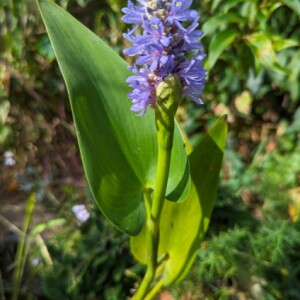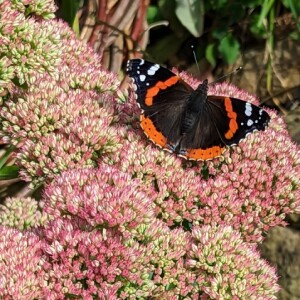Picking through history
The history of the Bramley's Seedling apple is one of the best. It is described in detail here. The précis version: in about 1809 a little girl called Mary Ann Brailsford planted an apple seed it a pot. When it grew too big it was planted in the garden of her house in Southwell, Nottinghamshire. In 1813, the house was sold to Matthew Bramley, the butcher. In 1856, an enterprising 17-year-old apprentice nurseryman, Henry Merryweather, saw a basket of impressive apples, and was told they were "old Mr Bramley's". He asked for some cuttings and was given them on condition that if the trees were sold, they would be called "Bramley's"
Working for an international company, I encounteted bemusement from colleagues worldwide that we British make a distinction between 'cooking' and 'eating' apples. Even more bizzarely, our cooking apples are, for the most part, a single variety that collapses into a mush resembling wallpaper paste almost as soon as it is exposed to heat. And the resulting puree is so acidic that it needs to be paired with cake, sweet pastry or sugar to be edible as a dessert. Not for the first time, the British are the exception
This box is the best of our bramleys from this year's harvest. Less than usual, but more than we expected. A lot were discarded as rotten, or half rotten, on the tree - many more than usual, a result of the year's odd weather, I think. As usual, a proportion have a codling moth larva that has bored a hole through the fruit to pupate in the centre; 'the worm in the core'. We can see most of the ones affected, and set them aside for immediate use of the undamaged part of the flesh, but we always miss a few, resulting in the 'one bad apple' in the stored 'barrel' (box!) - it's surprising though how seldom the rot extends to the adjacent fruit, provided you find them in time. Somewhere in there is a hopeful metaphor
The kitchen knife is there for scale - it is 18.5cm long. The largest apple weighs just over 550g. Last year we had one over 650g. Reports of Bramley's over 1kg are fairly commonplace
The most surprising Bramley's fact of all is that Mary Ann's tree is still alive, more than 200 years after she planted it, despite having been blown down by a gale 100 years ago and re-righted. The tree has incurable honey fungus, which is slowly killing it, but that fact has been reported for over 7 years, and is still there. The house and garden is owned by Nottingham Trent University. They have micro-propagated clones of the old tree, which are said to produce superior apples to those propagated by cuttings for 200 years
One other thought: I wonder if it was butcher Bramley's idea that pork should be paired with tart apple-sauce. That would be a neatly closed circle



Comments
Sign in or get an account to comment.


